Samsung to unveil its first wearable robot Bot Fit by end-October
Bot Fit is best suited for fitness enthusiasts, maximizing the effects of walking through AI and robotics technology
By Oct 14, 2024 (Gmt+09:00)
Samsung steps up AR race with advanced microdisplay for smart glasses


When in S. Korea, it’s a ritual: Foreigners make stops at CU, GS25, 7-Eleven


Maybe Happy Ending: A robot love story that rewrote Broadway playbook


NPS yet to schedule external manager selection; PE firms’ fundraising woes deepen


US auto parts tariffs take effect; Korea avoids heavy hit


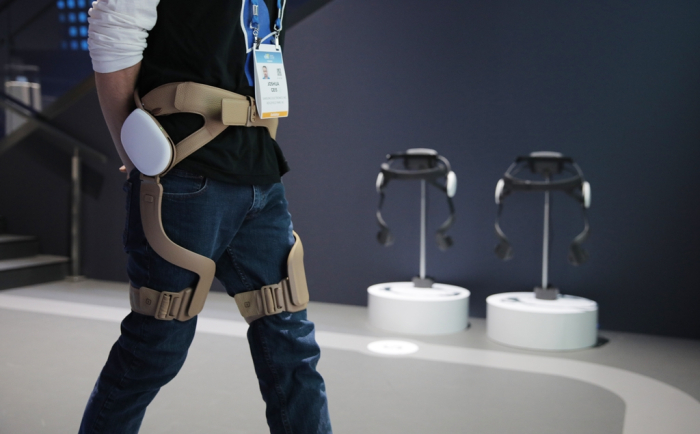
Samsung Electronics Co. will unveil its first wearable robot, Bot Fit, later this month as the South Korean tech giant delves into the global healthcare robotics sector, which is expected to grow to $84.1 billion by 2032.
In 2019, Samsung showcased a wearable robot, the gait enhancing and motivation system (GEMS), at the CES trade show. The exoskeleton-type robot, codenamed EX1, is meant to be worn from hips to knees to assist people with walking, exercising and improving their gait.
The company later renamed it Bot Fit. According to people familiar with the matter, Samsung now aims to bring the wearable assistive robot to market by the end of this year.
According to sources, Samsung recently launched the Samsung Bot Fit app, as yet undisclosed to the public.
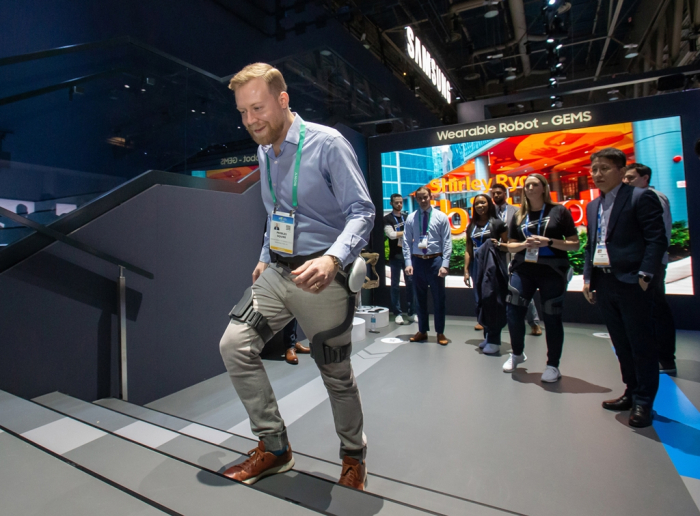
An analysis of the app showed that Bot Fit is designed to support walking exercises for fitness enthusiasts, maximizing the effects of walking through artificial intelligence and robotics.
Earlier, the market expected Bot Fit would mainly assist elderly users with walking problems.
Separately, Samsung has started hiring staff for Bot Fit experience zones, and an official release of the assistive robot is expected later this month, sources said.
The wearable robot will likely be priced at about 3 million won ($2,213), they said.
That is slightly more affordable than the 3.19 million won for the walking assistance robot built and sold by WIRobotics Co., a startup founded by former Samsung engineers.
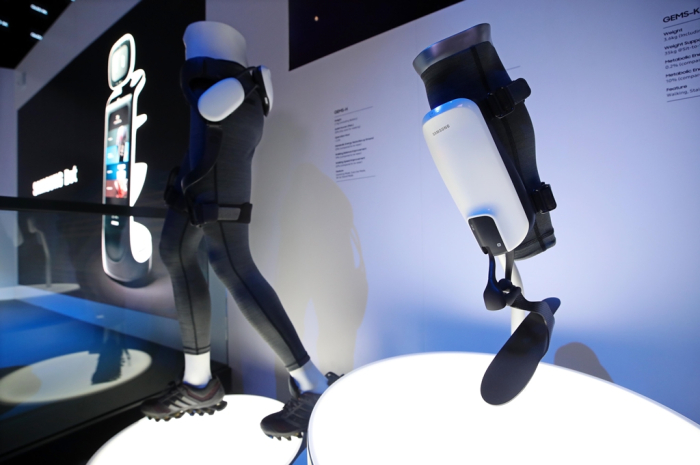
DESIGNED FOR FITNESS ENTHUSIASTS
Sources said Bot Fit is designed to enhance the effectiveness of walking exercises on flat ground.
Users can choose from different exercise intensities, and AI optimizes the intensity based on the user's performance.
The exercise programs are divided into four categories: Power Walking, Interval Walking, Speed Walking and Leisure Walking, categorized based on the coaching intensity of the AI trainer.
Power Walking involves Bot Fit controlling the user to maintain a fast pace, ideal for those seeking high-intensity exercise, while Interval Walking alternates between fast and slow walking intervals, making it great for a cardio workout.
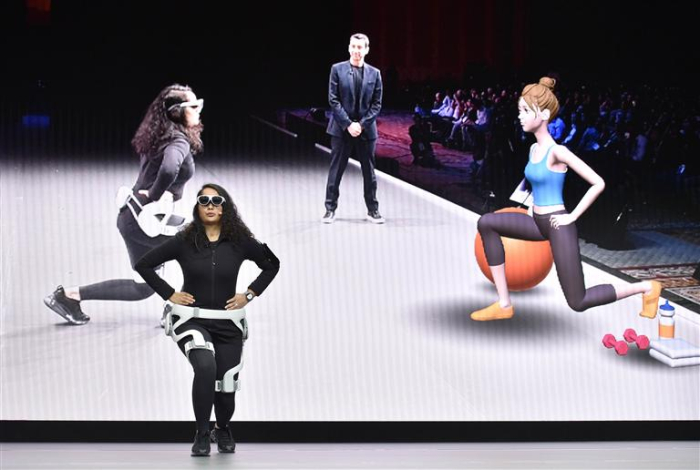
A cardio workout or cardiovascular exercise is any vigorous activity that increases heart rate and respiration and raises oxygen and blood flow throughout the body while using large muscle groups of the body repetitively and rhythmically.
Bot Fit offers two modes: Aqua and Booster.
Aqua mode adds resistance to the walk as if one is laden with sandbags, while Booster mode helps users maintain a wider stride and walk faster.
COLLABORATIVE ROBOTS
Samsung is fostering robotics as one of its key businesses to drive future growth.
The company set up a robotics business team in 2022.
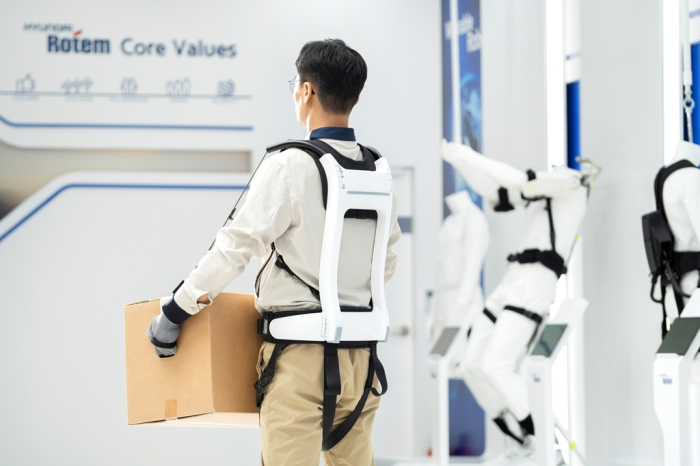
Samsung, the world’s largest memory chipmaker and smartphone manufacturer, initially planned to bring its first wearable robot EX1 to market by the end of 2023, but the plan wasn’t realized.
In addition to the assistive robot Bot Fit, the company is also spending heavily to enhance its presence in the collaborative robot market.
Last year, Samsung acquired a controlling stake in Rainbow Robotics Co., a Korean collaborative robot maker.
Collaborative robots are intended for direct human-robot interaction within a shared space, where humans and robots are close to each other. Such robots are getting more advanced thanks to AI and big data.
Rainbow Robotics was founded in 2011 as the humanoid robot research center of KAIST, the Korea Advanced Institution of Science and Technology, one of the country’s most prestigious universities.
Rainbow is also developing products such as quadruped walking robots, bipedal platforms and autonomous mobile robots with Hyundai Rotem Co., a unit of Hyundai Motor Co.
According to market research firm Expert Market Research, the global healthcare robot market is expected to grow to $84.1 billion by 2032 from $12.7 billion in 2023.
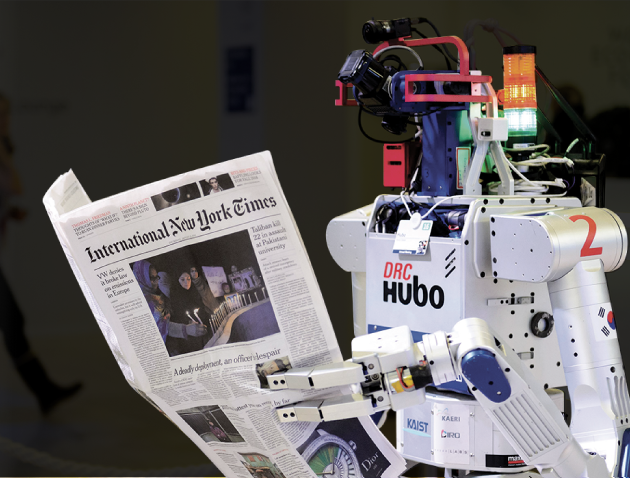
HUMANOID ROBOTS
In the mid- to long-term, Samsung aims to unveil a humanoid robot, similar to those by Tesla Inc. and Figure AI Inc., a US-based humanoid robot-making startup.
Samsung has invested millions of dollars in Figure AI.
Samsung Electronics Executive Chairman Jay Y. Lee recently urged company executives to develop a humanoid robot that can be deployed at semiconductor factories.
Samsung is accelerating its robotics R&D by assigning robotics experts to the Samsung Research Center and SAIT, formerly the Samsung Advanced Institute of Technology, which handle the conglomerate’s future technology development.
Write to Jeong-Soo Hwang at hjs@hankyung.com
In-Soo Nam edited this article.
-
 RoboticsLightweight cobots with higher payload fuel robot arms rivalry
RoboticsLightweight cobots with higher payload fuel robot arms rivalryOct 14, 2024 (Gmt+09:00)
2 Min read -
 RoboticsSamsung’s Ballie, LG's Q9 AI robots steal the show at IFA 2024
RoboticsSamsung’s Ballie, LG's Q9 AI robots steal the show at IFA 2024Sep 06, 2024 (Gmt+09:00)
2 Min read -
 RoboticsRainbow Robotics develops 4-legged counter-terrorism robot
RoboticsRainbow Robotics develops 4-legged counter-terrorism robotAug 13, 2024 (Gmt+09:00)
2 Min read -
 RoboticsSamsung raises Rainbow Robotics stake, eyes management control
RoboticsSamsung raises Rainbow Robotics stake, eyes management controlMar 16, 2023 (Gmt+09:00)
2 Min read -
 RoboticsSamsung Electronics to launch its first robot EX1 this year to rival LG
RoboticsSamsung Electronics to launch its first robot EX1 this year to rival LGFeb 06, 2023 (Gmt+09:00)
2 Min read -
 RoboticsSamsung Electronics to market wearable robot for healthcare by year-end
RoboticsSamsung Electronics to market wearable robot for healthcare by year-endJun 15, 2021 (Gmt+09:00)
2 Min read


